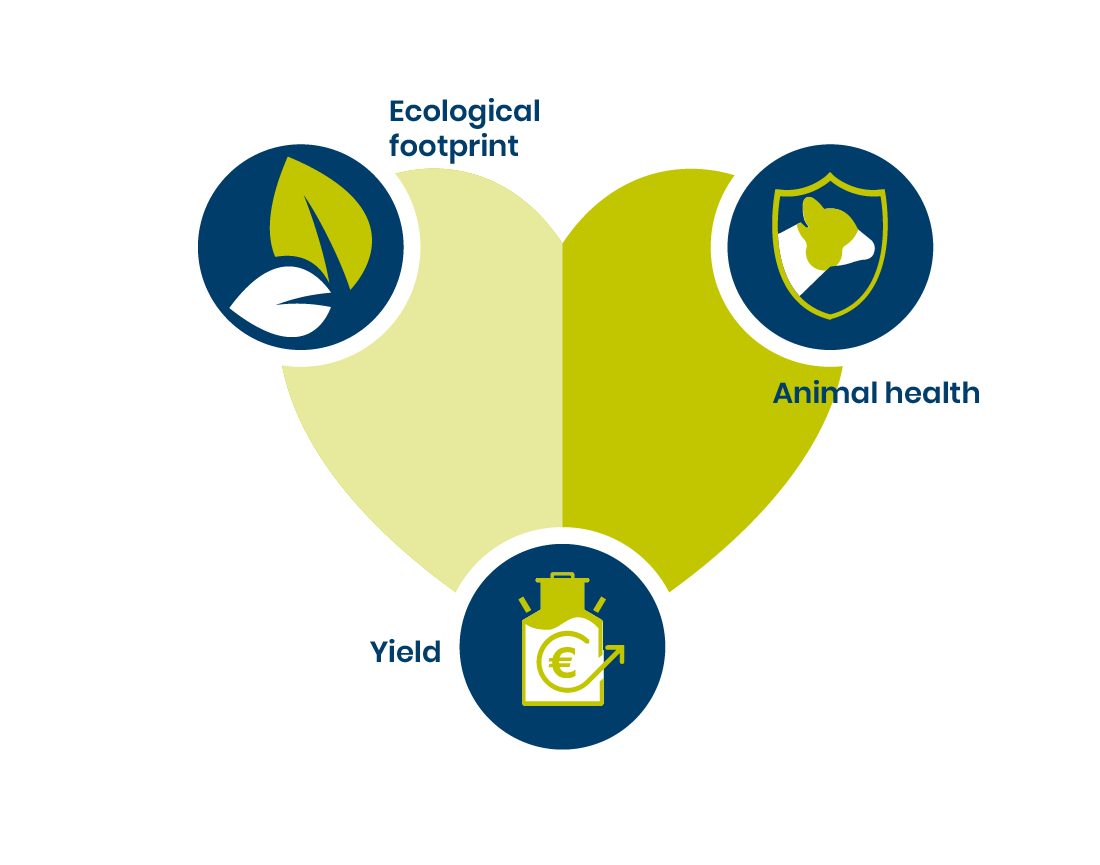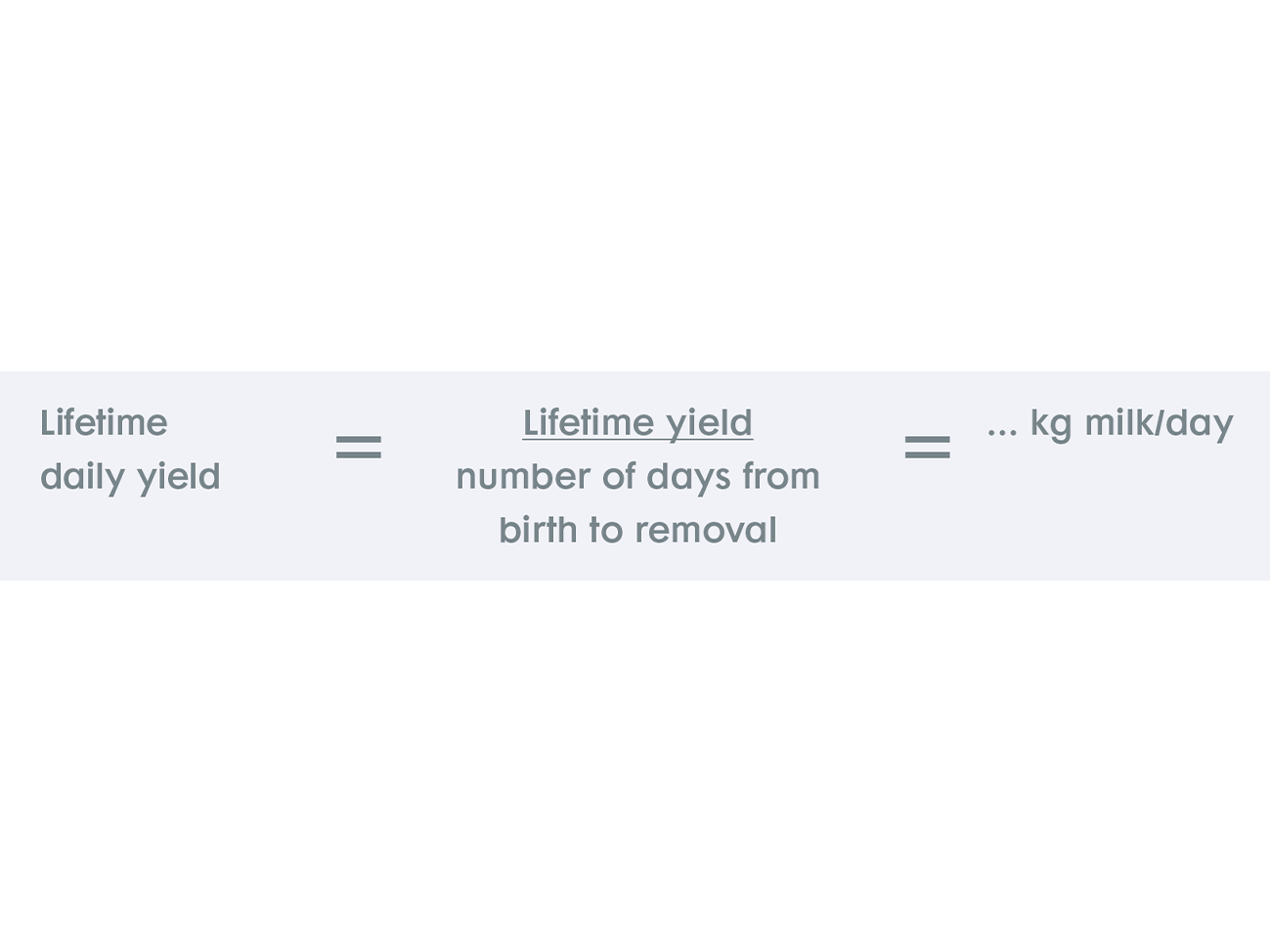Sustainable dairy farming with the lowest possible footprint
Research1 shows that there is a clear link between technical/economic performance and emissions. Farms with the lowest greenhouse gas emissions show an increase in margin of 1 EUR/100 liter of milk produced. This presents a unique opportunity for dairy farmers, as healthy animals are clearly more productive and therefore also produce the lowest emissions per liter of milk.2 Therefore, efforts that contribute to sustainable dairy farming dovetail nicely with reducing the footprint.
In short, there are plenty of challenges for you as a dairy farmer. To meet these three challenges, it is important for you to take care of the animals on your farm, from birth to removal, as efficiently as possible resulting in a high(er) lifetime daily yield. Using the HealthyLife Calculator, you can take the first step. You do the math!


